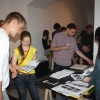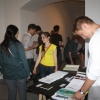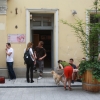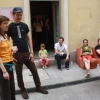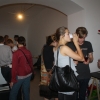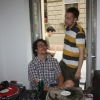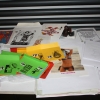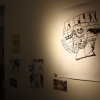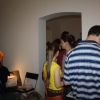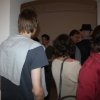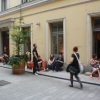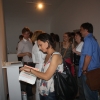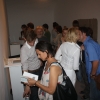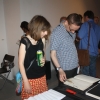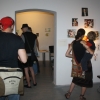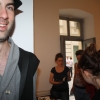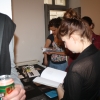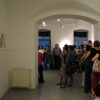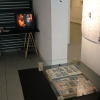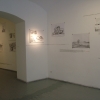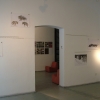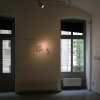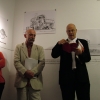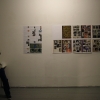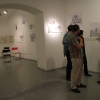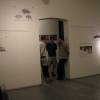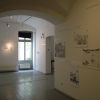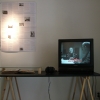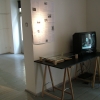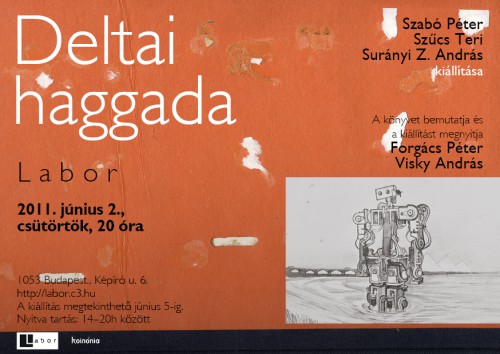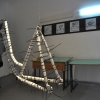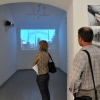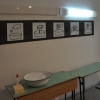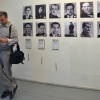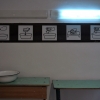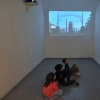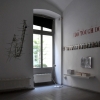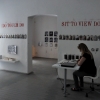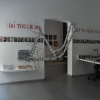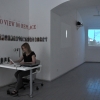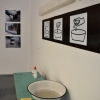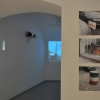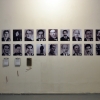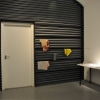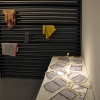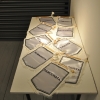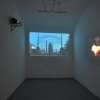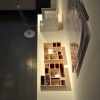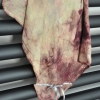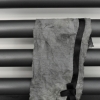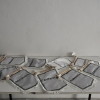Warning: preg_match(): Compilation failed: invalid range in character class at offset 34 in
/var/www/labor.c3.hu/wp-content/plugins/nextgen-gallery/products/photocrati_nextgen/modules/nextgen_basic_tagcloud/package.module.nextgen_basic_tagcloud.php on line
183
Warning: preg_match(): Compilation failed: invalid range in character class at offset 34 in
/var/www/labor.c3.hu/wp-content/plugins/nextgen-gallery/products/photocrati_nextgen/modules/nextgen_basic_tagcloud/package.module.nextgen_basic_tagcloud.php on line
183
Warning: preg_match(): Compilation failed: invalid range in character class at offset 34 in
/var/www/labor.c3.hu/wp-content/plugins/nextgen-gallery/products/photocrati_nextgen/modules/nextgen_basic_tagcloud/package.module.nextgen_basic_tagcloud.php on line
183
Warning: preg_match(): Compilation failed: invalid range in character class at offset 34 in
/var/www/labor.c3.hu/wp-content/plugins/nextgen-gallery/products/photocrati_nextgen/modules/nextgen_basic_tagcloud/package.module.nextgen_basic_tagcloud.php on line
183
Warning: preg_match(): Compilation failed: invalid range in character class at offset 34 in
/var/www/labor.c3.hu/wp-content/plugins/nextgen-gallery/products/photocrati_nextgen/modules/nextgen_basic_tagcloud/package.module.nextgen_basic_tagcloud.php on line
183
A joint exhibition by The Hungarian Fine Art University Doctorate School and the University of the Arts London, CCW Graduate School. The opening is on the 7th p.m. 19th of May 2011. The Hungarian Fine Art University Doctorate School investigated into the relationship of collective and individual memory in the first semester of academic year 2010/2011. A series of lectures entitled: “The memory of the incommunicable” were joined through the international workshop: “Tracing the layers of historical and traumatic events”. The theme and the location was the former Manfred Weiss Ironworks, which later became the Csepel Ironworks. The workshop happened between the 23rd and the 29th of October 2010. Participants included the students and teachers of The Hungarian Fine Art University Doctorate School: Nemere Kerezsi, Kata Soós, Szabolcs Süli-Zakar, Laura Somogyi, Balázs Kicsiny, and from the University of the Arts London CCW Graduate School: Prof. Stephen Scrivener and Dr. Hayley Newman, Marsha Bradfield, Maria Isabel Arango and Ana Laura Lopes de la Torre. The works presented at the Labor exhibition are reflections on the workshop theme. They show fundamentally different artistic approaches, in certain cases they are rather works in progress or experiments of interpretation rather than ready artefacts. The Hungarian Fine Art University Doctorate School reflects the strengthening social critical artistic attitude in contemporary Hungarian art, as a result of this it chose a social-economic location where the layers of social change and collective traumas’ traces are still discoverable in stratifications. The formal Manfred Weiss Ironworks,
later Csepel Ironworks was chosen as the exemplary model. In this industrial estate the main events of the 20th century are traceable, with communal traumas, revolutions, changes of political regimes, the contradictions of modernity[1]. The location of the workshop also gave the participants the possibility of observing and researching into realm of different visual system of signs.[2] The international workshop will continue from the 11th to the 15th of July in 2011 in London. The theme will be to research the former biggest prison in London (in the 19th century), the Millbank Penitentiary. In the site of the prison now stands the Chelsea School of Art and Design and Tate Britain. The workshop organizers and participants would like to thank István Zémann, the secretary of the Csepel Local History Association.
photos by Szabolcs Süli-Zakar The exhibition will be open between the 20
th and 27
th of May 2011, open to visitors between 1 p.m. and 7 p.m. at the Labor Gallery.
[1] The Csepel Ironworks has special importance in relation to political propaganda. Baron Manfred Weiss capitalist weapon manufacturer’s universe became after the second world war the location for the propaganda personality cult, with the new name of Mátyás Rákosi Works. During the 1956 revolution the Csepel Workers Council announced ownership of the plant by the collective workers. After the defeat of the revolution the Csepel Ironwork become a pseudo proletarian paradise, called “Red Csepel”, with political supervision and corruption of skilled labour. The abyss between the economical reality and the political propaganda inevitably leaded to the 1989’s political regime change. The Csepel Ironworks was privatised followed by a general decline, with very few exceptions of successful businesses. Even with that, thanks to a few old skill workers the local patriotic attitude is still present at the location of the formal Csepel Ironworks, which mixes the contradictory nature of economical reality and nostalgia.
[2] For example the Csepel’s cold war commanding bunker’s visual signage and relating objects or the Kádár regime decorators workshop propaganda symbols, or the eclectic visual language of the service buildings after 1989, which is a mixture of consumerist fetishism with the remains of the former regime’s shortage economy object hood.A joint exhibition by
The Hungarian Fine Art University Doctorate School and the
University of the Arts London, CCW Graduate School.
The opening is on the 7th p.m. 19th of May 2011.
The Hungarian Fine Art University Doctorate School investigated into the relationship of collective and individual memory in the first semester of academic year 2010/2011. A series of lectures entitled: “The memory of the incommunicable” were joined through the international workshop: “Tracing the layers of historical and traumatic events”. The theme and the location was the former Manfred Weiss Ironworks, which later became the Csepel Ironworks.
The workshop happened between the 23rd and the 29th of October 2010. Participants included the students and teachers of The Hungarian Fine Art University Doctorate School: Nemere Kerezsi, Kata Soós, Szabolcs Süli-Zakar, Laura Somogyi, Balázs Kicsiny, and from the University of the Arts London CCW Graduate School: Prof. Stephen Scrivener and Dr. Hayley Newman, Marsha Bradfield, Maria Isabel Arango and Ana Laura Lopes de la Torre.
The works presented at the Labor exhibition are reflections on the workshop theme. They show fundamentally different artistic approaches, in certain cases they are rather works in progress or experiments of interpretation rather than ready artefacts.
The Hungarian Fine Art University Doctorate School reflects the strengthening social critical artistic attitude in contemporary Hungarian art, as a result of this it chose a social-economic location where the layers of social change and collective traumas’ traces are still discoverable in stratifications. The formal Manfred Weiss Ironworks, later Csepel Ironworks was chosen as the exemplary model. In this industrial estate the main events of the 20th century are traceable, with communal traumas, revolutions, changes of political regimes, the contradictions of modernity[1]. The location of the workshop also gave the participants the possibility of observing and researching into realm of different visual system of signs.[2]
The international workshop will continue from the 11th to the 15th of July in 2011 in London. The theme will be to research the former biggest prison in London (in the 19th century), the Millbank Penitentiary. In the site of the prison now stands the Chelsea School of Art and Design and Tate Britain.
The workshop organizers and participants would like to thank István Zémann, the secretary of the Csepel Local History Association.
photos by Szabolcs Süli-Zakar
The exhibition will be open between the 20th and 27th of May 2011, open to visitors between 1 p.m. and 7 p.m. at the Labor Gallery.
[1] The Csepel Ironworks has special importance in relation to political propaganda. Baron Manfred Weiss capitalist weapon manufacturer’s universe became after the second world war the location for the propaganda personality cult, with the new name of Mátyás Rákosi Works. During the 1956 revolution the Csepel Workers Council announced ownership of the plant by the collective workers. After the defeat of the revolution the Csepel Ironwork become a pseudo proletarian paradise, called “Red Csepel”, with political supervision and corruption of skilled labour. The abyss between the economical reality and the political propaganda inevitably leaded to the 1989’s political regime change. The Csepel Ironworks was privatised followed by a general decline, with very few exceptions of successful businesses. Even with that, thanks to a few old skill workers the local patriotic attitude is still present at the location of the formal Csepel Ironworks, which mixes the contradictory nature of economical reality and nostalgia.
[2] For example the Csepel’s cold war commanding bunker’s visual signage and relating objects or the Kádár regime decorators workshop propaganda symbols, or the eclectic visual language of the service buildings after 1989, which is a mixture of consumerist fetishism with the remains of the former regime’s shortage economy object hood.A joint exhibition by The Hungarian Fine Art University Doctorate School and the University of the Arts London, CCW Graduate School. The opening is on the 7th p.m. 19th of May 2011. The Hungarian Fine Art University Doctorate School investigated into the relationship of collective and individual memory in the first semester of academic year 2010/2011. A series of lectures entitled: “The memory of the incommunicable” were joined through the international workshop: “Tracing the layers of historical and traumatic events”. The theme and the location was the former Manfred Weiss Ironworks, which later became the Csepel Ironworks. The workshop happened between the 23rd and the 29th of October 2010. Participants included the students and teachers of The Hungarian Fine Art University Doctorate School: Nemere Kerezsi, Kata Soós, Szabolcs Süli-Zakar, Laura Somogyi, Balázs Kicsiny, and from the University of the Arts London CCW Graduate School: Prof. Stephen Scrivener and Dr. Hayley Newman, Marsha Bradfield, Maria Isabel Arango and Ana Laura Lopes de la Torre. The works presented at the Labor exhibition are reflections on the workshop theme. They show fundamentally different artistic approaches, in certain cases they are rather works in progress or experiments of interpretation rather than ready artefacts. The Hungarian Fine Art University Doctorate School reflects the strengthening social critical artistic attitude in contemporary Hungarian art, as a result of this it chose a social-economic location where the layers of social change and collective traumas’ traces are still discoverable in stratifications. The formal Manfred Weiss Ironworks,
later Csepel Ironworks was chosen as the exemplary model. In this industrial estate the main events of the 20th century are traceable, with communal traumas, revolutions, changes of political regimes, the contradictions of modernity[1]. The location of the workshop also gave the participants the possibility of observing and researching into realm of different visual system of signs.[2] The international workshop will continue from the 11th to the 15th of July in 2011 in London. The theme will be to research the former biggest prison in London (in the 19th century), the Millbank Penitentiary. In the site of the prison now stands the Chelsea School of Art and Design and Tate Britain. The workshop organizers and participants would like to thank István Zémann, the secretary of the Csepel Local History Association.
photos by Szabolcs Süli-Zakar The exhibition will be open between the 20
th and 27
th of May 2011, open to visitors between 1 p.m. and 7 p.m. at the Labor Gallery.
[1] The Csepel Ironworks has special importance in relation to political propaganda. Baron Manfred Weiss capitalist weapon manufacturer’s universe became after the second world war the location for the propaganda personality cult, with the new name of Mátyás Rákosi Works. During the 1956 revolution the Csepel Workers Council announced ownership of the plant by the collective workers. After the defeat of the revolution the Csepel Ironwork become a pseudo proletarian paradise, called “Red Csepel”, with political supervision and corruption of skilled labour. The abyss between the economical reality and the political propaganda inevitably leaded to the 1989’s political regime change. The Csepel Ironworks was privatised followed by a general decline, with very few exceptions of successful businesses. Even with that, thanks to a few old skill workers the local patriotic attitude is still present at the location of the formal Csepel Ironworks, which mixes the contradictory nature of economical reality and nostalgia.
[2] For example the Csepel’s cold war commanding bunker’s visual signage and relating objects or the Kádár regime decorators workshop propaganda symbols, or the eclectic visual language of the service buildings after 1989, which is a mixture of consumerist fetishism with the remains of the former regime’s shortage economy object hood.A joint exhibition by
The Hungarian Fine Art University Doctorate School and the
University of the Arts London, CCW Graduate School.
The opening is on the 7th p.m. 19th of May 2011.
The Hungarian Fine Art University Doctorate School investigated into the relationship of collective and individual memory in the first semester of academic year 2010/2011. A series of lectures entitled: “The memory of the incommunicable” were joined through the international workshop: “Tracing the layers of historical and traumatic events”. The theme and the location was the former Manfred Weiss Ironworks, which later became the Csepel Ironworks.
The workshop happened between the 23rd and the 29th of October 2010. Participants included the students and teachers of The Hungarian Fine Art University Doctorate School: Nemere Kerezsi, Kata Soós, Szabolcs Süli-Zakar, Laura Somogyi, Balázs Kicsiny, and from the University of the Arts London CCW Graduate School: Prof. Stephen Scrivener and Dr. Hayley Newman, Marsha Bradfield, Maria Isabel Arango and Ana Laura Lopes de la Torre.
The works presented at the Labor exhibition are reflections on the workshop theme. They show fundamentally different artistic approaches, in certain cases they are rather works in progress or experiments of interpretation rather than ready artefacts.
The Hungarian Fine Art University Doctorate School reflects the strengthening social critical artistic attitude in contemporary Hungarian art, as a result of this it chose a social-economic location where the layers of social change and collective traumas’ traces are still discoverable in stratifications. The formal Manfred Weiss Ironworks, later Csepel Ironworks was chosen as the exemplary model. In this industrial estate the main events of the 20th century are traceable, with communal traumas, revolutions, changes of political regimes, the contradictions of modernity[1]. The location of the workshop also gave the participants the possibility of observing and researching into realm of different visual system of signs.[2]
The international workshop will continue from the 11th to the 15th of July in 2011 in London. The theme will be to research the former biggest prison in London (in the 19th century), the Millbank Penitentiary. In the site of the prison now stands the Chelsea School of Art and Design and Tate Britain.
The workshop organizers and participants would like to thank István Zémann, the secretary of the Csepel Local History Association.
photos by Szabolcs Süli-Zakar
The exhibition will be open between the 20th and 27th of May 2011, open to visitors between 1 p.m. and 7 p.m. at the Labor Gallery.
[1] The Csepel Ironworks has special importance in relation to political propaganda. Baron Manfred Weiss capitalist weapon manufacturer’s universe became after the second world war the location for the propaganda personality cult, with the new name of Mátyás Rákosi Works. During the 1956 revolution the Csepel Workers Council announced ownership of the plant by the collective workers. After the defeat of the revolution the Csepel Ironwork become a pseudo proletarian paradise, called “Red Csepel”, with political supervision and corruption of skilled labour. The abyss between the economical reality and the political propaganda inevitably leaded to the 1989’s political regime change. The Csepel Ironworks was privatised followed by a general decline, with very few exceptions of successful businesses. Even with that, thanks to a few old skill workers the local patriotic attitude is still present at the location of the formal Csepel Ironworks, which mixes the contradictory nature of economical reality and nostalgia.
[2] For example the Csepel’s cold war commanding bunker’s visual signage and relating objects or the Kádár regime decorators workshop propaganda symbols, or the eclectic visual language of the service buildings after 1989, which is a mixture of consumerist fetishism with the remains of the former regime’s shortage economy object hood.

